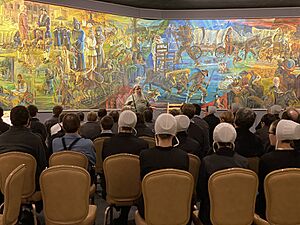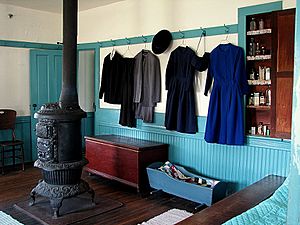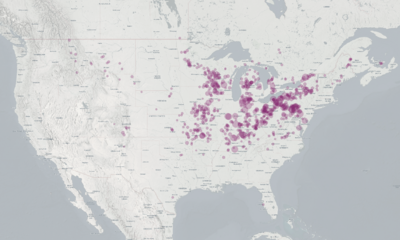Amish facts for kids
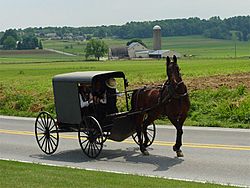
An Amish family riding in a traditional Amish buggy in Lancaster County, Pennsylvania
|
|
| Total population | |
|---|---|
(2025, Old Order Amish) |
|
| Founder | |
| Jakob Ammann | |
| Regions with significant populations | |
| United States (large populations in Indiana, Ohio, Pennsylvania; notable populations in Maryland, Kentucky, Missouri, Michigan, New York, and Wisconsin; small populations in various other states) Canada (mainly in Ontario) |
|
| Religions | |
| Anabaptist | |
| Scriptures | |
| The Bible | |
| Languages | |
| English Pennsylvania Dutch Swiss German |
The Amish are a group of Christians known for their simple and traditional way of life. They live in close-knit communities, often separate from the modern world. The Amish are famous for their plain dress, using horse-drawn buggies instead of cars, and their strong focus on family and faith. They are a type of Anabaptist Christian, which means they believe in adult baptism.
The Amish value living a simple, rural life. They focus on manual labor, humility, and submitting to God's will. They are slow to adopt modern technology like electricity from power lines or the internet. This is because they want to protect family time and encourage face-to-face conversations.
The Amish church started in 1693 in Switzerland. It was a split from another Anabaptist group called the Mennonites. The leader of the new group was Jakob Ammann, and his followers became known as the Amish. In the 18th century, many Amish moved to North America to find religious freedom and farmland.
Today, when people talk about the Amish, they usually mean the Old Order Amish. They follow the most traditional rules. There are other groups, like the New Order Amish and Beachy Amish, who have slightly different rules about technology. As of 2025, there are over 411,000 Old Order Amish living in the United States and Canada, and their population is growing quickly.
Contents
History of the Amish
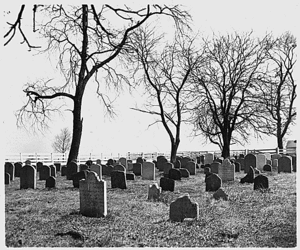
The story of the Amish begins with the Anabaptist movement during the Reformation in Europe in the 1500s. The Anabaptists believed that people should be baptized as adults who can make their own choice to follow Jesus, not as infants. This was a radical idea at the time.
The Start of the Amish Church
In 1693, a Swiss Anabaptist leader named Jakob Ammann felt that the Mennonite church was not being strict enough. He believed in a stronger form of church discipline, including shunning members who broke the rules. Those who followed Ammann's stricter teachings split off and became known as the Amish.
Moving to North America
In the early 1700s, many Amish began moving to North America. They were looking for a place where they could practice their religion freely and buy land. Many settled in Pennsylvania, which was known for its religious tolerance. A second, larger group of Amish immigrants arrived in the mid-1800s and settled in states like Ohio, Illinois, and Iowa.
A Major Division
In the mid-1800s, the Amish faced a major disagreement over how to deal with modern society. Some members wanted to adopt new ideas and technologies, while others wanted to stick to the old ways. This led to a split.
- The more progressive group became known as the Amish Mennonites. They eventually joined with other Mennonite churches and are not considered Amish today.
- The more traditional group became known as the Old Order Amish. They are the ones who kept the horse and buggy, plain dress, and other traditions the Amish are known for.
Religious Beliefs and Practices
Two key ideas in Amish life are humility and submission to God. They try to avoid pride or arrogance. They believe in Gelassenheit, a German word that means calmness and "letting be." This means they accept God's will and put the needs of the community before their own.
Amish church membership starts with baptism, which usually happens between the ages of 16 and 23. Before baptism, teenagers in some communities go through a period called rumspringa (running around). During this time, they can experience the outside world before deciding if they want to commit to the church for life.
Church Services and Rules
Church services are held every other Sunday in a member's home or barn, not in a special church building. A church district is made up of 20 to 40 families. The rules of the church are called the Ordnung. This is a set of unwritten rules that covers many parts of daily life, such as:
- How to dress
- Which technologies are allowed
- How to interact with the non-Amish world (whom they call "English")
The Ordnung is reviewed by all church members twice a year. It can be slightly different from one community to another.
Amish Way of Life
The Amish lifestyle is guided by the Ordnung. Family and community are at the center of everything. The Amish believe large families are a blessing from God, and children are raised to help with work on the farm or in the family business.
Hard work is seen as a godly duty. The Amish are known for their farming, woodworking, and construction skills. They often avoid labor-saving machines because they believe hard work builds character.
Transportation
Amish communities are famous for using the horse and buggy for local travel. They believe this promotes a slower, more thoughtful pace of life. For long-distance travel, many Amish are allowed to ride in cars, buses, or trains, as long as they do not own them. Some also use electric bicycles for shorter trips.
Plain Clothing
The Amish wear plain clothing to show their humility and separation from the world.
- Men wear solid-colored shirts, dark pants held up by suspenders, and wide-brimmed hats. Married men grow beards but do not grow mustaches, as mustaches are associated with the military.
- Women wear modest, solid-colored dresses with long sleeves, aprons, and a prayer covering, or kapp, on their heads. The color of their bonnet can show if they are married (white) or single (black). They do not wear jewelry, including wedding rings.
Education
Amish children attend their own private schools, often in a one-room schoolhouse. They stop their formal education after the eighth grade, at around age 13 or 14. The Amish believe this provides all the knowledge needed for a successful Amish life. In 1972, the U.S. Supreme Court case Wisconsin v. Yoder ruled that they had the right to do this for religious reasons.
Amish Subgroups and Technology
Not all Amish are the same. They are divided into different subgroups, or affiliations, with different rules. The three main types are:
- Old Order Amish: The largest and most traditional group. They use horses and buggies and speak Pennsylvania Dutch.
- New Order Amish: A group that separated from the Old Order in the 1960s. They also use buggies, but they may use more modern farm equipment and are more open to some new ideas.
- Beachy Amish: The most progressive group. They allow cars, use electricity, and hold services in church buildings.
The table below shows how different Amish groups use technology. The most traditional groups are at the top.
| Affiliation | Tractor for fieldwork | Roto- tiller | Power lawn mower | Propane gas | Bulk milk tank | Mechanical milker | Mechanical refrigerator | Pickup balers | Inside flush toilet | Running water bath tub | Tractor for belt power | Pneumatic tools | Chain saw | Pressurized lamps | Motorized washing machines |
|---|---|---|---|---|---|---|---|---|---|---|---|---|---|---|---|
| Percentage of use by all Amish |
6 | 20 | 25 | 30 | 35 | 35 | 40 | 50 | 70 | 70 | 70 | 70 | 75 | 90 | 97 |
| Swartzentruber | No | No | No | No | No | No | No | No | No | No | No | Some | No | No | Yes |
| Swiss (Adams) | No | No | Some | No | No | No | No | No | Some | No | No | Some | Some | Some | Some |
| Buchanan/Medford | No | No | No | No | No | No | No | No | No | No | No | Some | No | Yes | Yes |
| Danner | No | No | No | Some | No | No | Some | No | No | No | Yes | No | No | Yes | No |
| Geauga I | No | No | No | No | No | No | No | Some | Yes | Yes | Yes | Yes | Yes | Yes | Yes |
| Holmes Old Order | No | Some | Some | No* | No | No | Some | Yes | Yes | Yes | Yes | Yes | Yes | Yes | Yes |
| Elkhart-LaGrange | No | Some | Some | Some | Some | Some | Some | Some | Yes | Yes | Yes | Yes | Yes | Yes | Yes |
| Lancaster | No | No | Some | Yes | No | Yes | Yes | Yes | Yes | Yes | Yes | Yes | Yes | Yes | Yes |
| Nappanee, Indiana | No | Yes | Yes | Yes | Yes | Yes | Yes | Yes | Yes | Yes | Yes | Yes | Yes | Yes | Yes |
| Kalona | Yes | Yes | Yes | Yes | Yes | Yes | Yes | Yes | Yes | Yes | Yes | Yes | Yes | Yes | Yes |
* Natural gas allowed
Population and Location
The Amish population is one of the fastest-growing in the world. Families are often large, and the population doubles about every 20 years. As of 2025, there are over 411,000 Old Order Amish.
Where Do the Amish Live?
Over 98% of all Amish live in the United States. There are also growing communities in Canada.
- United States: The states with the largest Amish populations are Pennsylvania, Ohio, and Indiana. The largest single settlement is in Lancaster County, Pennsylvania. New settlements are started every year as the population grows and families look for affordable farmland.
- Canada: Most Canadian Amish live in Ontario. In recent years, new settlements have also started in Prince Edward Island and New Brunswick.
| State | Population |
|---|---|
| Pennsylvania | 95,410 |
| Ohio | 86,325 |
| Indiana | 67,310 |
| Wisconsin | 27,535 |
| New York | 25,220 |
Health and Medicine
Because the Amish marry within their own communities, certain genetic conditions are more common among them. This is known as the founder effect, as most Amish today descend from just a few hundred founders from the 18th century. Special clinics, like the Clinic for Special Children in Pennsylvania, have been set up to help treat these disorders.
Overall, the Amish are very healthy. Their active lifestyle, which involves a lot of manual labor, and their avoidance of things like tobacco mean they have lower rates of many diseases, including cancer.
The Amish do not have commercial health insurance. Instead, the community comes together to help pay for medical bills when a member is sick. They accept and use modern medicine, including hospitals and surgery, when needed.
See also
 In Spanish: Amish para niños
In Spanish: Amish para niños
- Amish and Mennonite Heritage Center
- Amish furniture
- Barn raising
- Hutterites
- Mennonites
- Plain people



